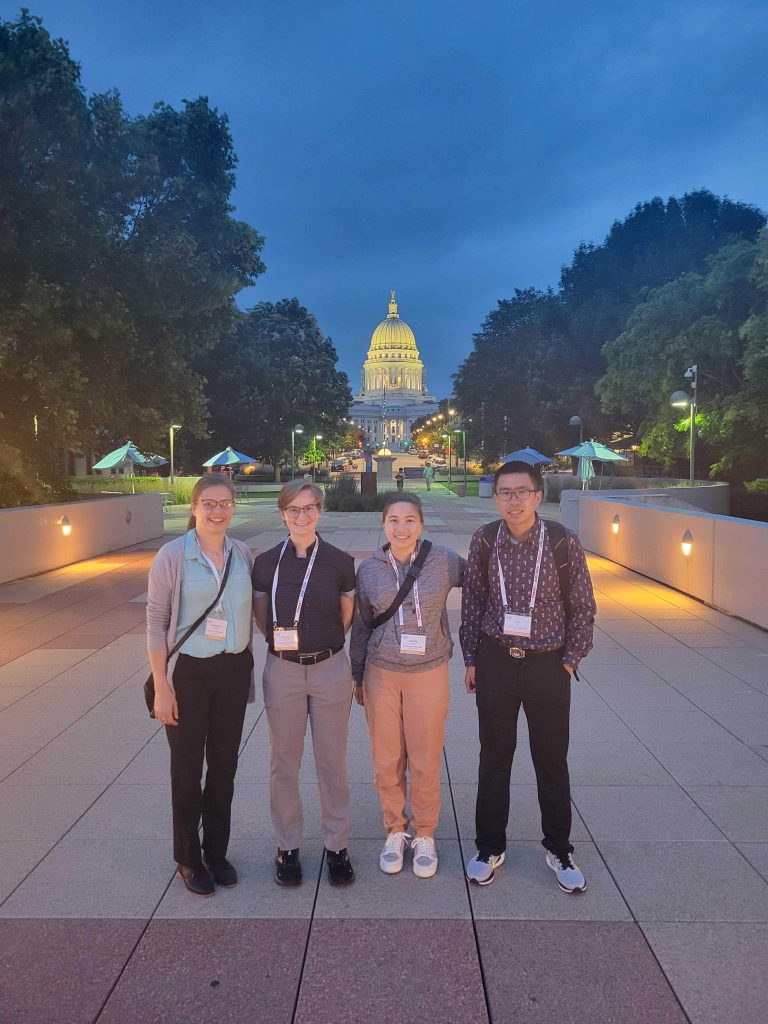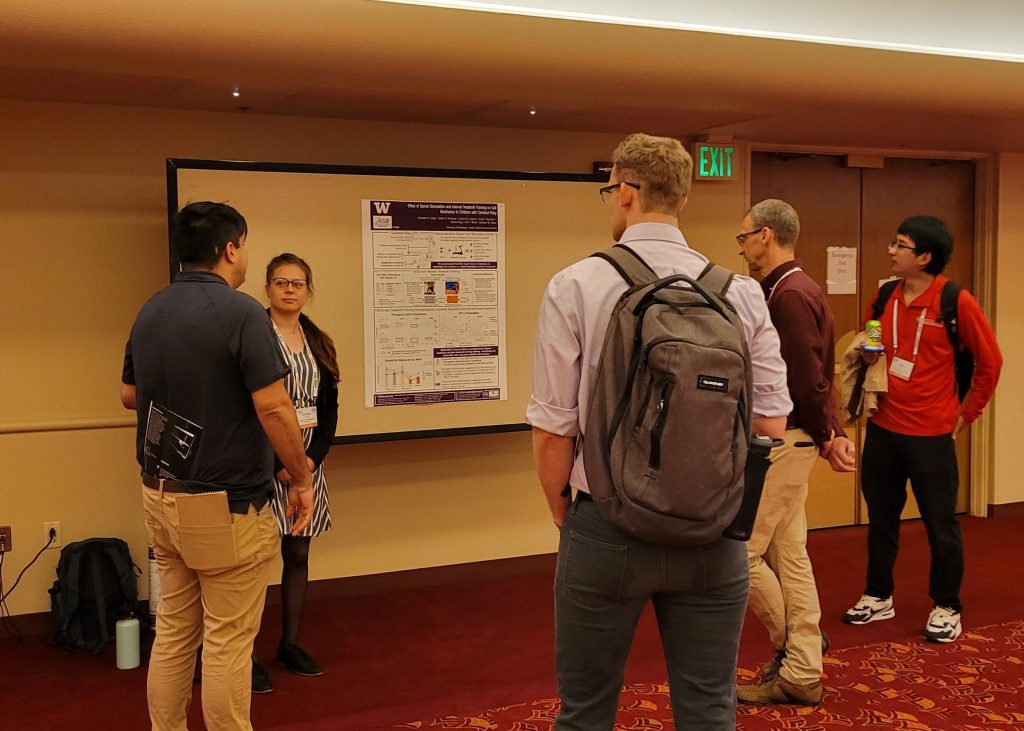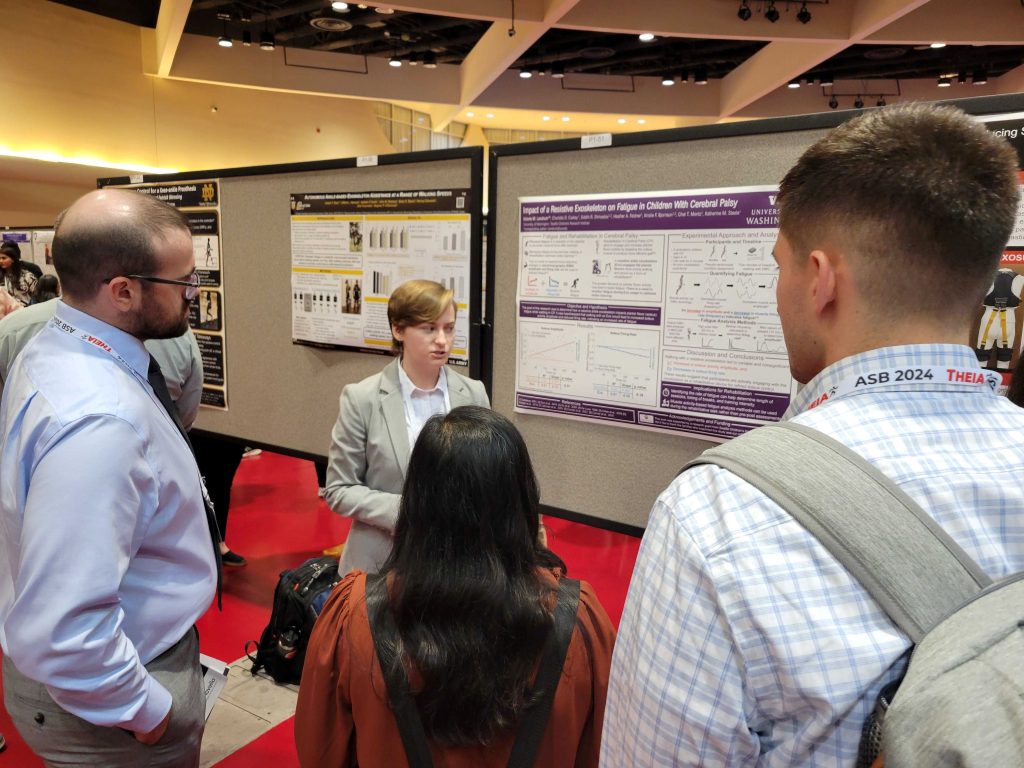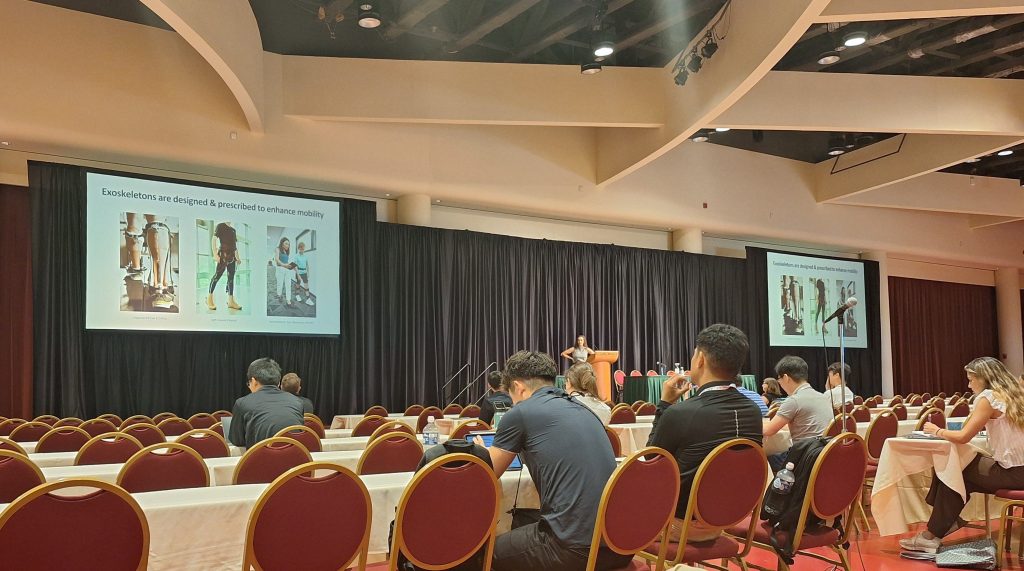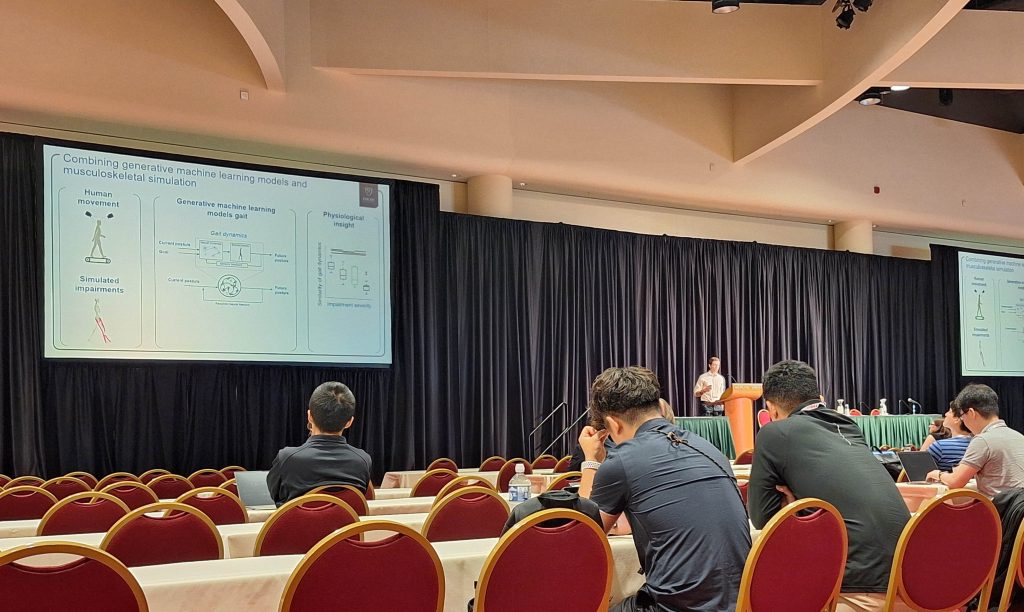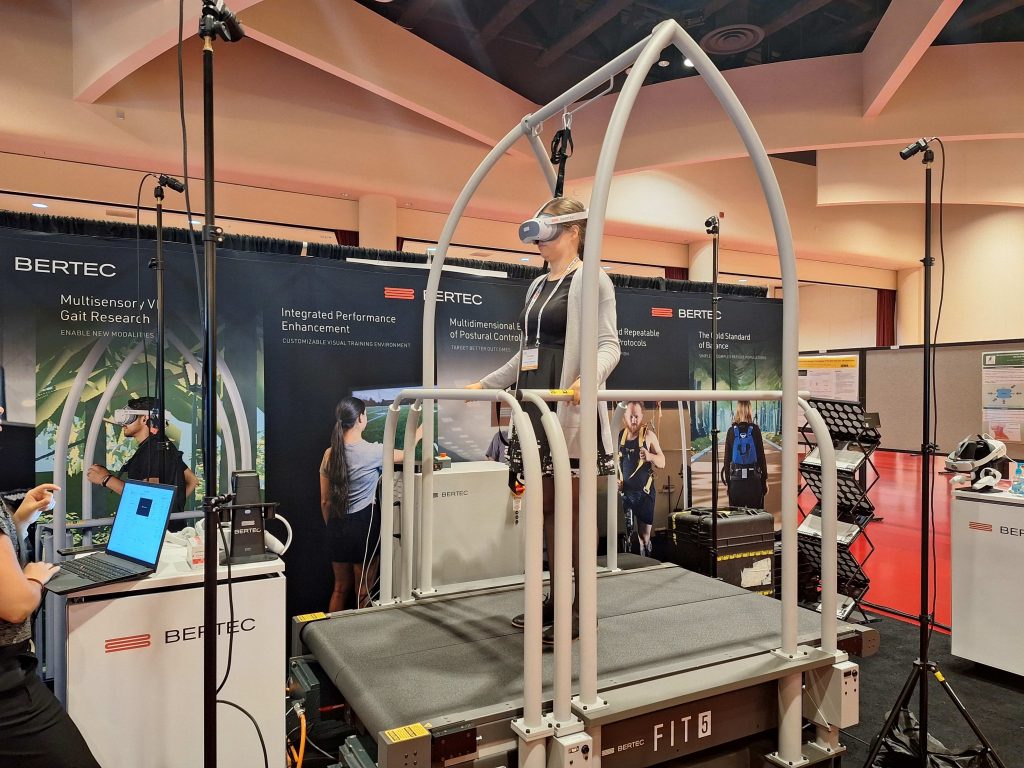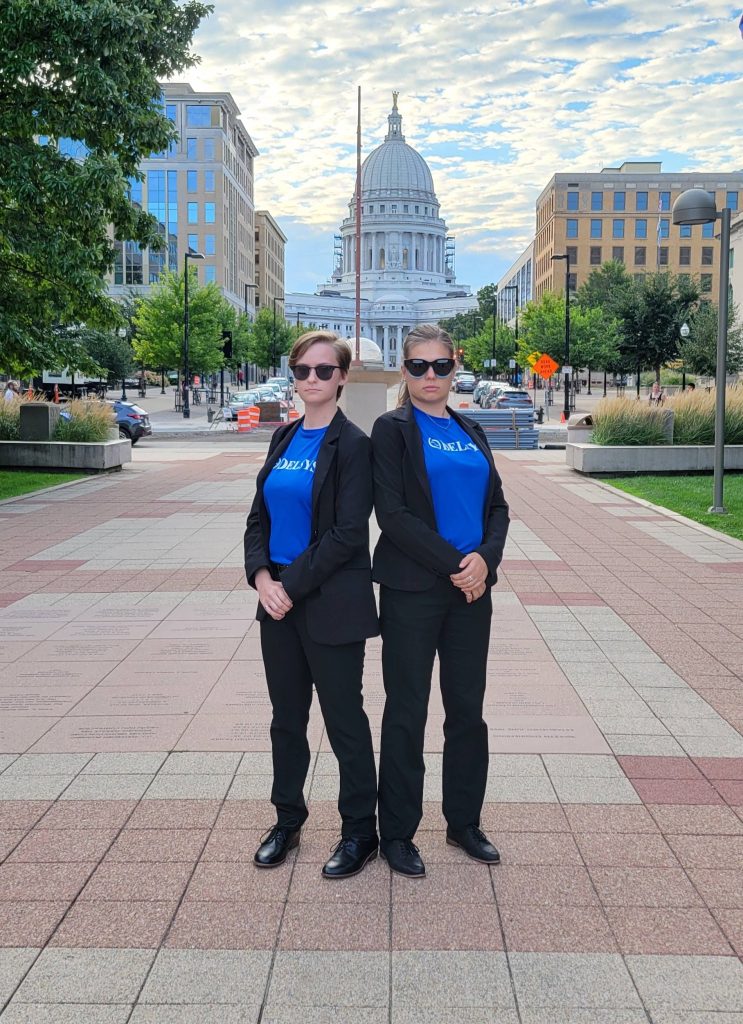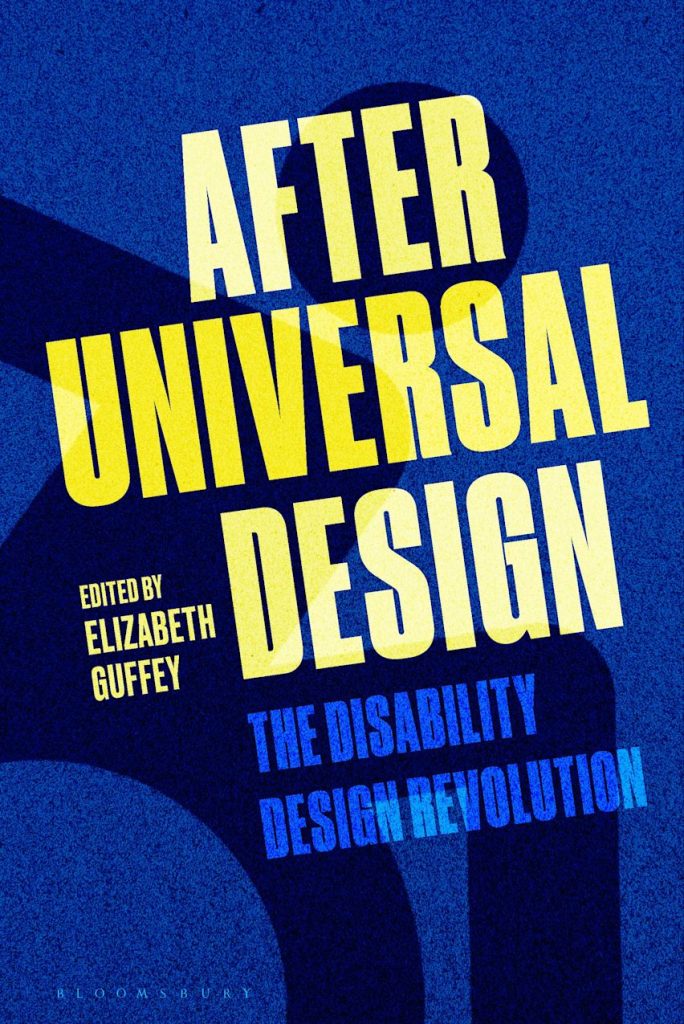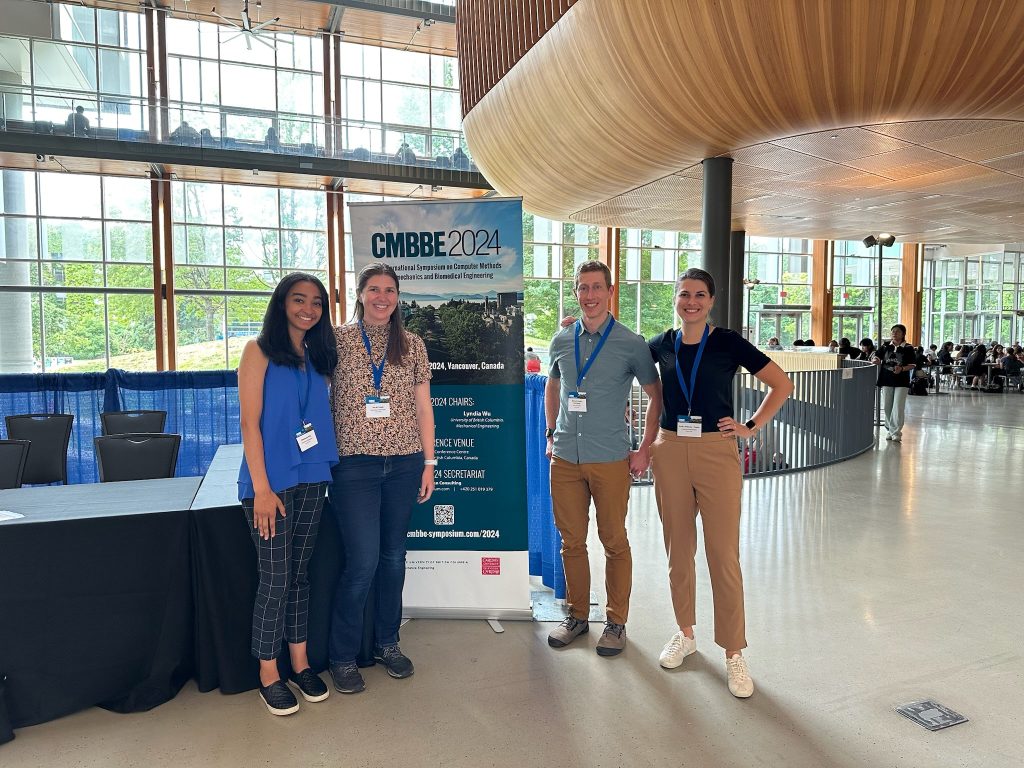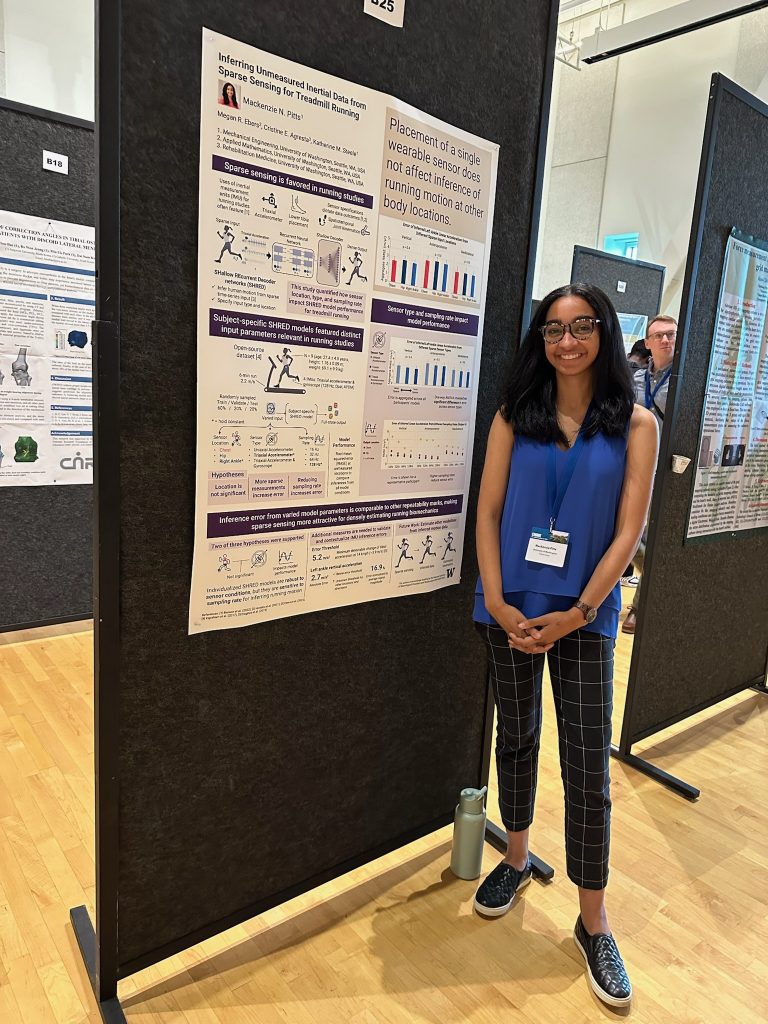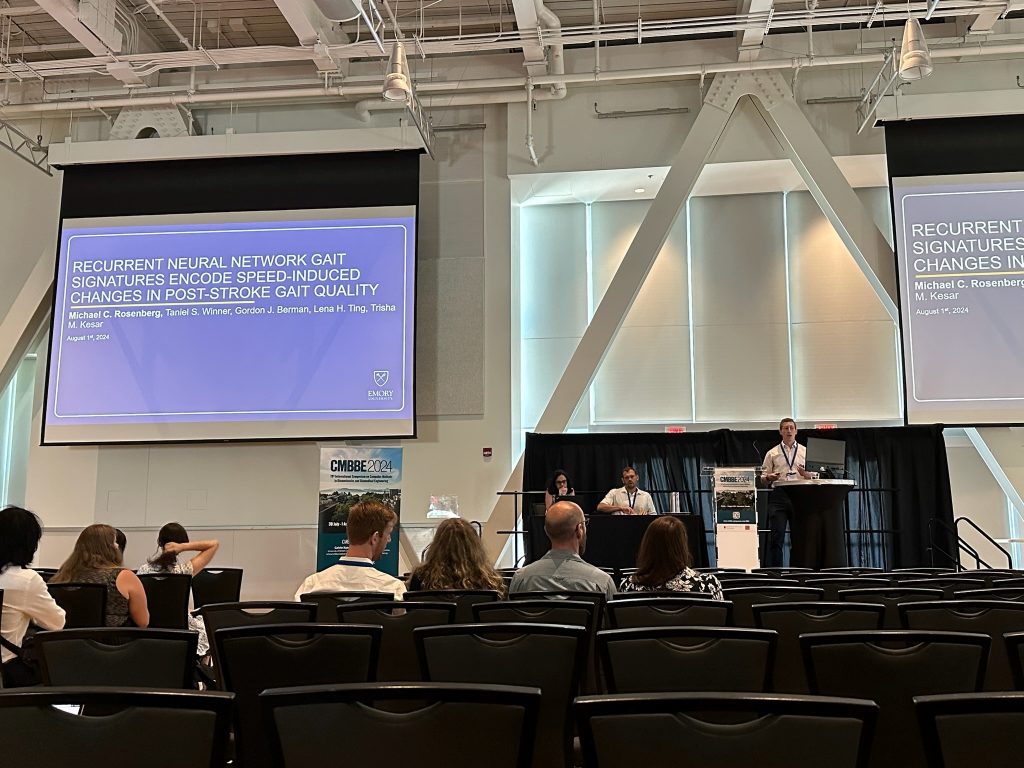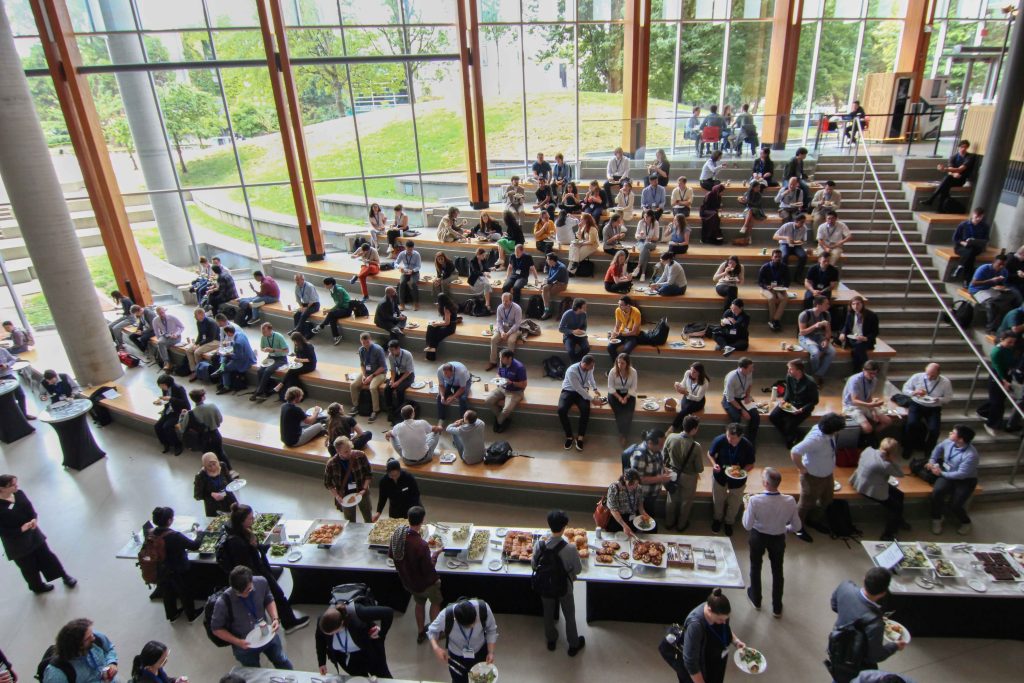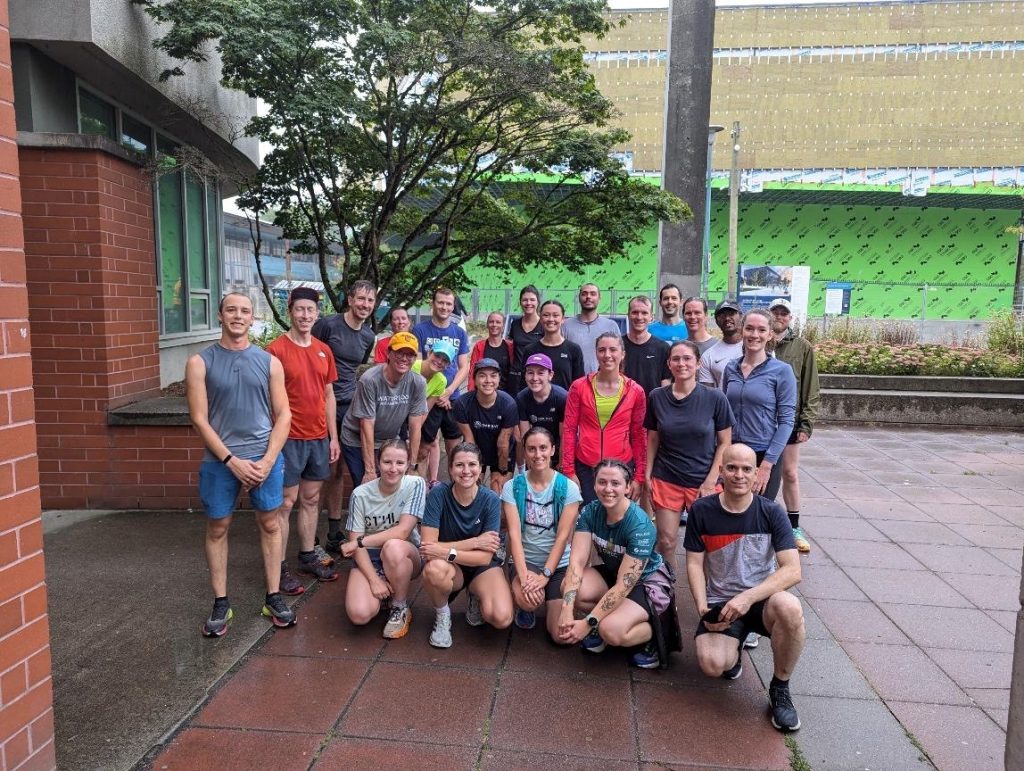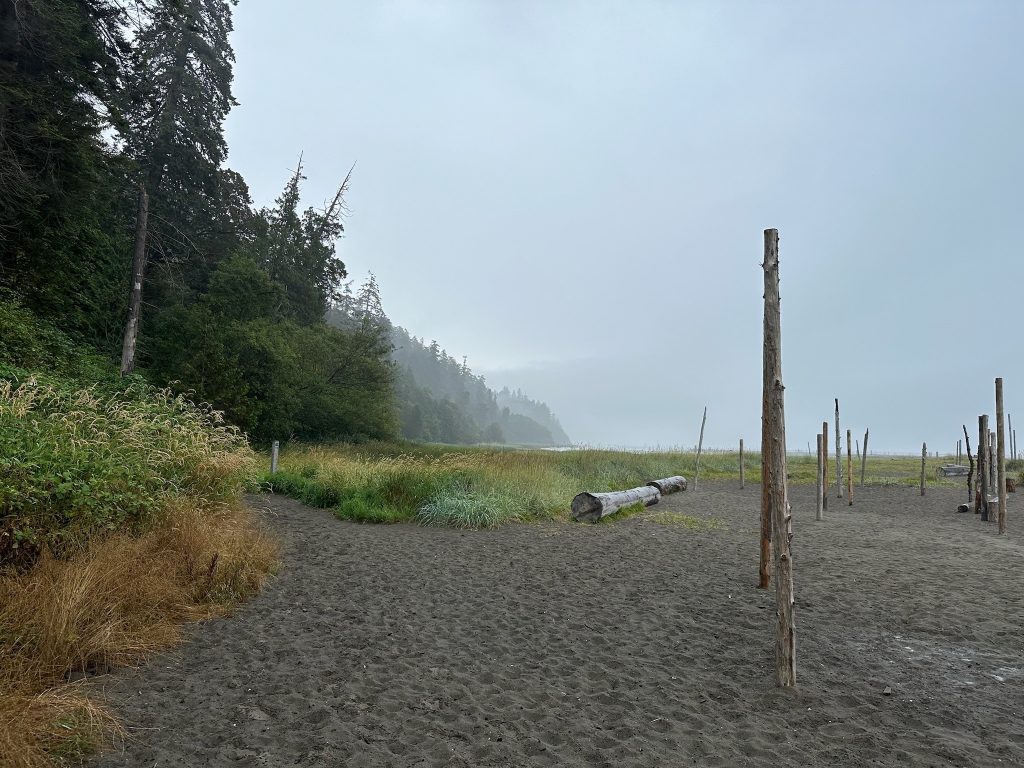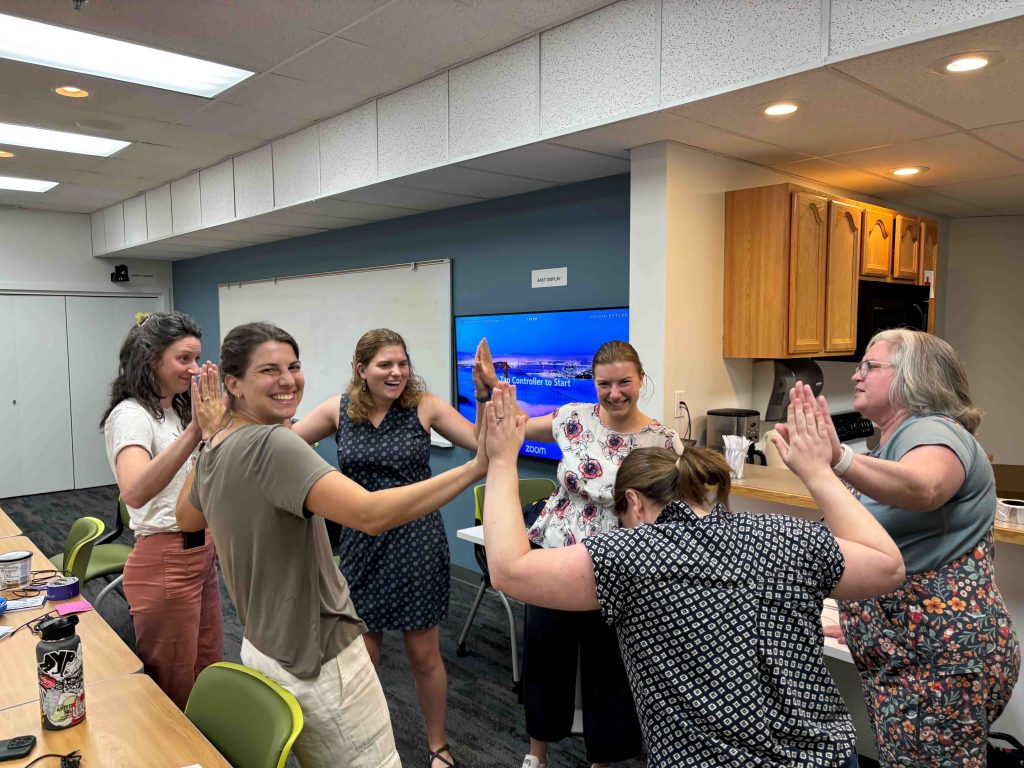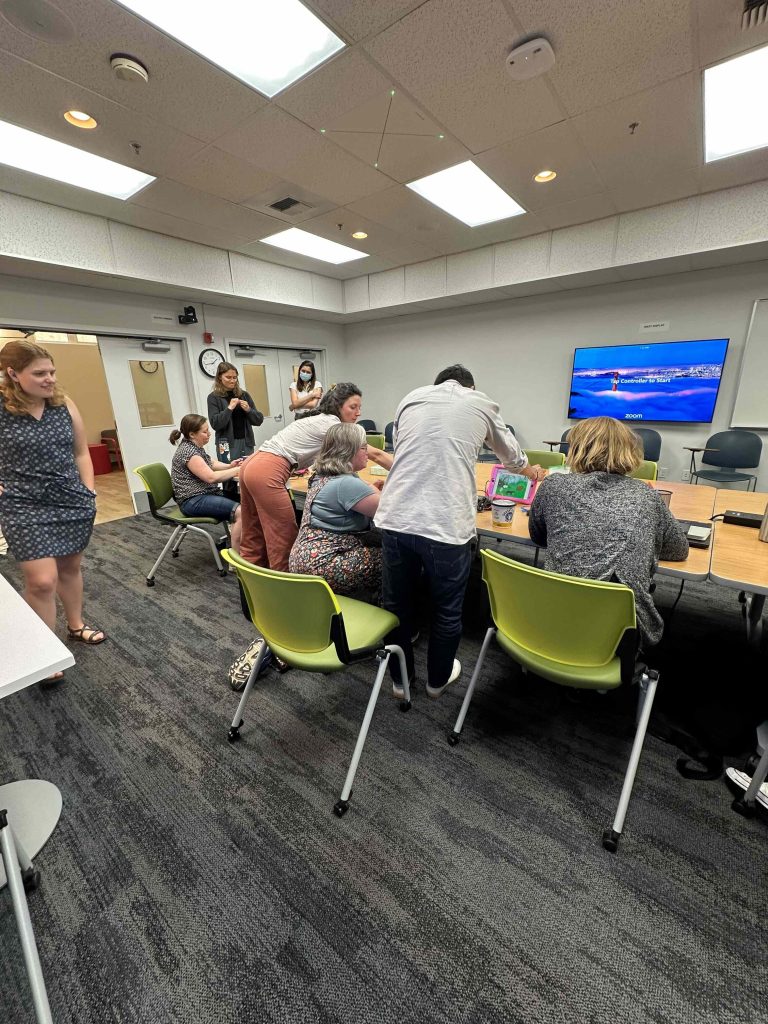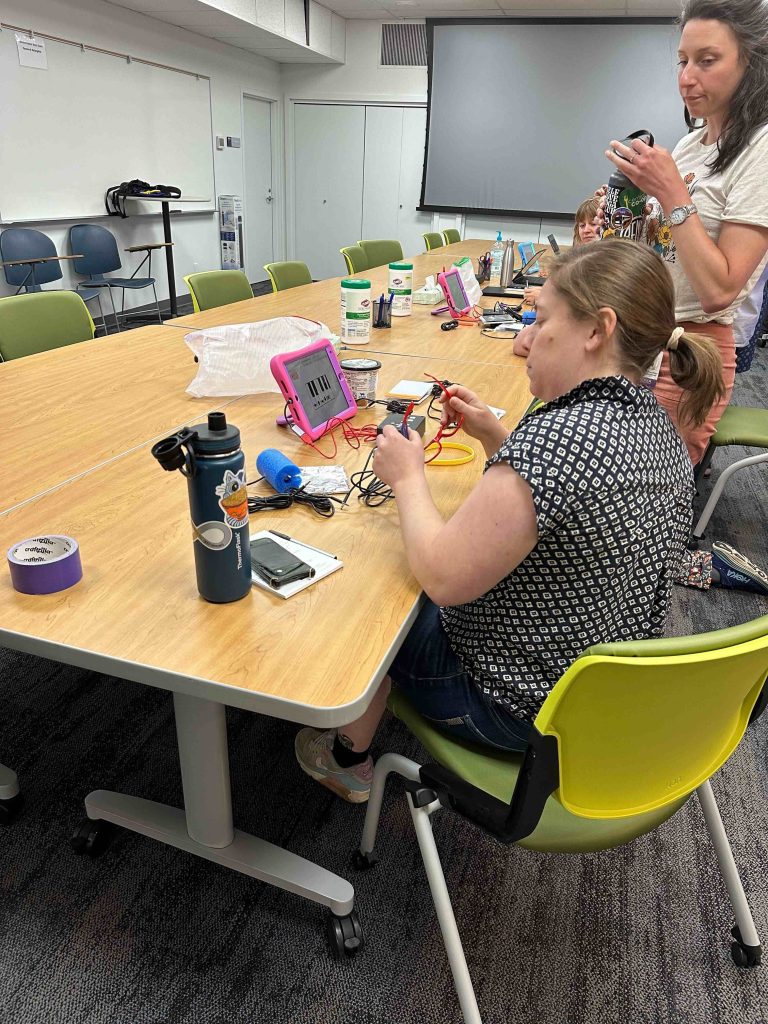Steele Lab members, Charlotte Caskey, Victoria (Tori) Landrum, and Megan Ebers, attended the American Society of Biomechanics Annual Meeting (ASB) in Madison, WI from August 5-8, 2024.
Charlotte gave a poster presentation on the “Effect of spinal stimulation and interval treadmill training on gait mechanics in children with cerebral palsy”
Tori also gave a poster presentation on the “Impact of a Resistive Exoskeleton on Fatigue in Children with Cerebral Palsy”
Megan co-hosted a Symposia Session titled, “Can machine learning reveal the next generation of neural and biomechanical processes governing human movement?” with Steele Lab Alumni, Michael Rosenberg. In Megan’s talk, “A machine learning approach to quantify individual gait responses to ankle exoskeletons,” she discussed how neural network-based discrepancy modeling can be used to isolate the dynamics governing changes in gait with ankle exoskeletons.

